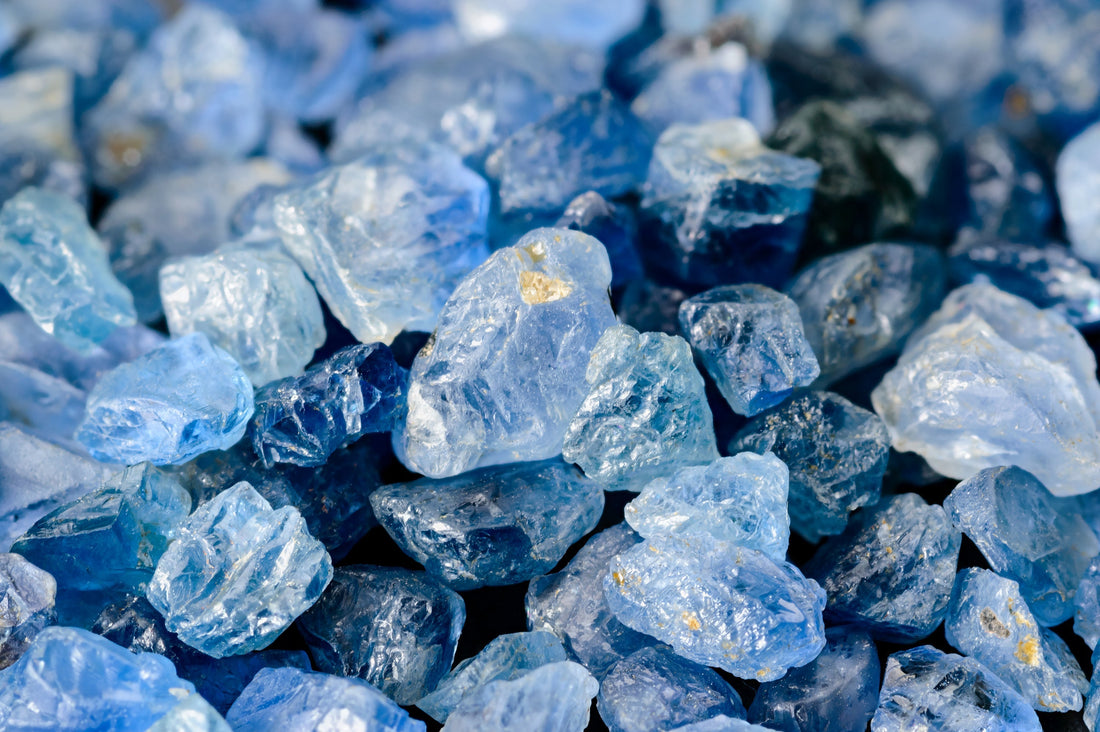
How are Sapphires formed? The Science!
The Science Behind Sapphires: Formation, Composition, and Properties
Sapphires have fascinated humanity for centuries with their mesmerising colours and unparalleled durability. Among the finest sapphires in the world, the Ceylon Sapphire from Sri Lanka stands out for its superior quality and brilliance. But what exactly makes a sapphire, and how are these stunning gemstones formed deep within the Earth?
What is a Sapphire?
A sapphire is a variety of the mineral corundum, composed primarily of aluminium oxide (Al₂O₃). The presence of trace elements like iron, titanium, chromium, and vanadium gives sapphires their incredible range of colours. While blue sapphires are the most famous, these gemstones also come in pink, yellow, green, and even colourless varieties.
How Sapphires Are Formed
Sapphires are formed under extreme geological conditions, deep within the Earth's crust. They originate in aluminium-rich environments where high pressure and heat facilitate the crystallisation of corundum, the mineral that forms sapphires. Over millions of years, these crystals are brought closer to the surface through geological processes such as erosion and volcanic activity.
In Sri Lanka, sapphire deposits are found in ancient alluvial gravel beds, where water and weathering have concentrated the gemstones over time. The country’s rich geological history makes it one of the world’s most significant sources of Ceylon Sapphire.
Chemical Composition and Structure
Sapphires are composed of aluminium oxide (Al₂O₃), a mineral known as corundum. Their exceptional hardness—9 on the Mohs scale—makes them one of the toughest natural gemstones, second only to diamonds.

While pure corundum is colourless, the presence of trace elements gives sapphires their iconic hues:
- Blue Sapphires – Coloured by iron (Fe) and titanium (Ti)
- Pink Sapphires – A result of chromium (Cr)
- Yellow and Green Sapphires – Influenced by iron content
- Padparadscha Sapphires – A rare blend of pink and orange caused by iron and chromium
The finest Ceylon Sapphires are known for their vibrant, medium-to-deep blue shades, often described as "cornflower blue."
Optical and Physical Properties
Sapphires exhibit remarkable optical properties, including pleochroism, meaning they display different colours when viewed from different angles. They also possess strong light dispersion, enhancing their brilliance when cut and polished.
Some sapphires exhibit asterism—a star-like effect caused by needle-like rutile inclusions, which results in the famous "star sapphire."
The Uniqueness of Ceylon Sapphires
What sets Ceylon Sapphires apart is their natural brilliance, high transparency, and lighter yet more intense blue hues compared to sapphires from other regions. Unlike heat-treated stones from other sources, many Sri Lankan sapphires are naturally vibrant without enhancement.
Sri Lanka’s reputation for producing some of the world’s finest sapphires remains unmatched, with mines continuing to yield exquisite gems that are highly valued by jewellers and collectors.
